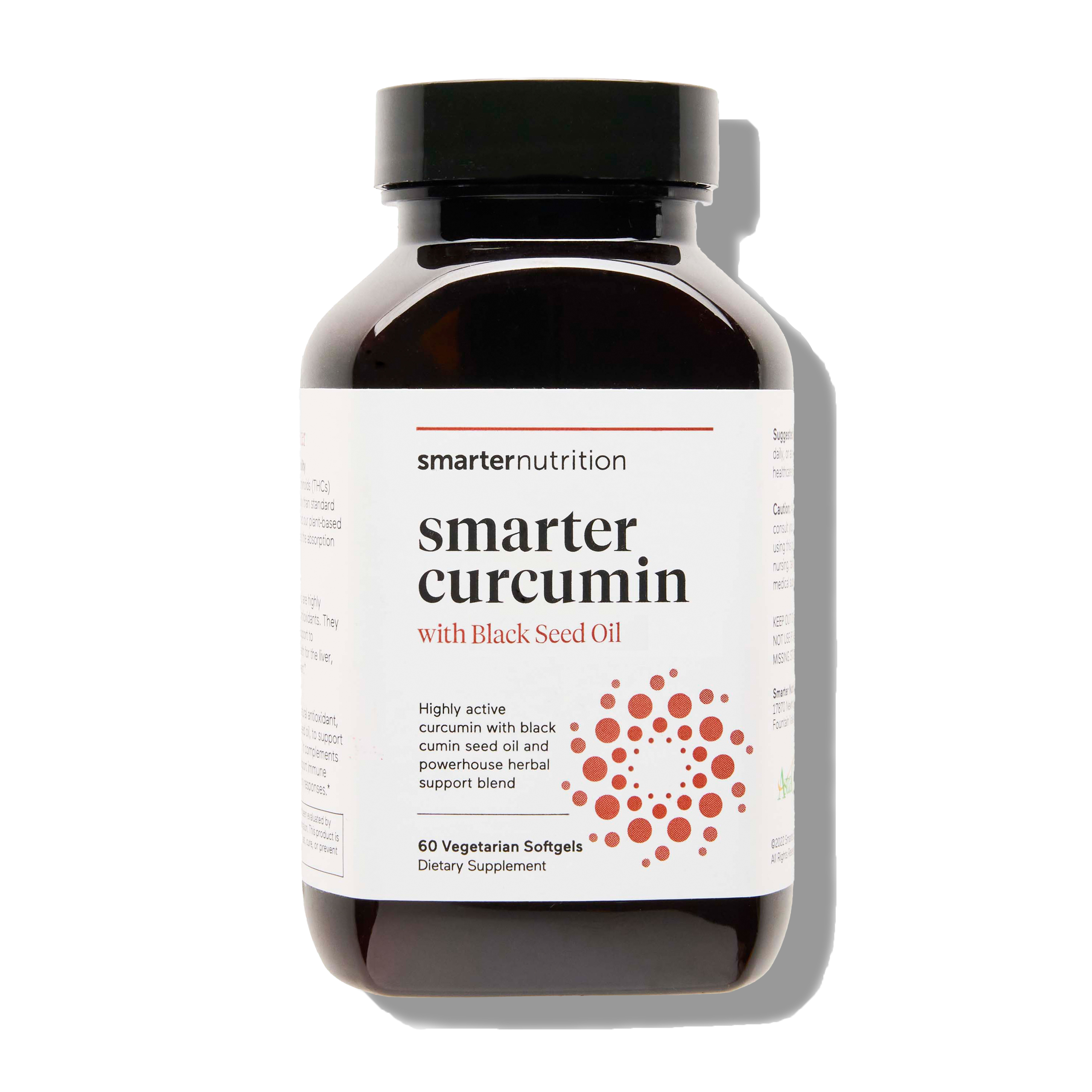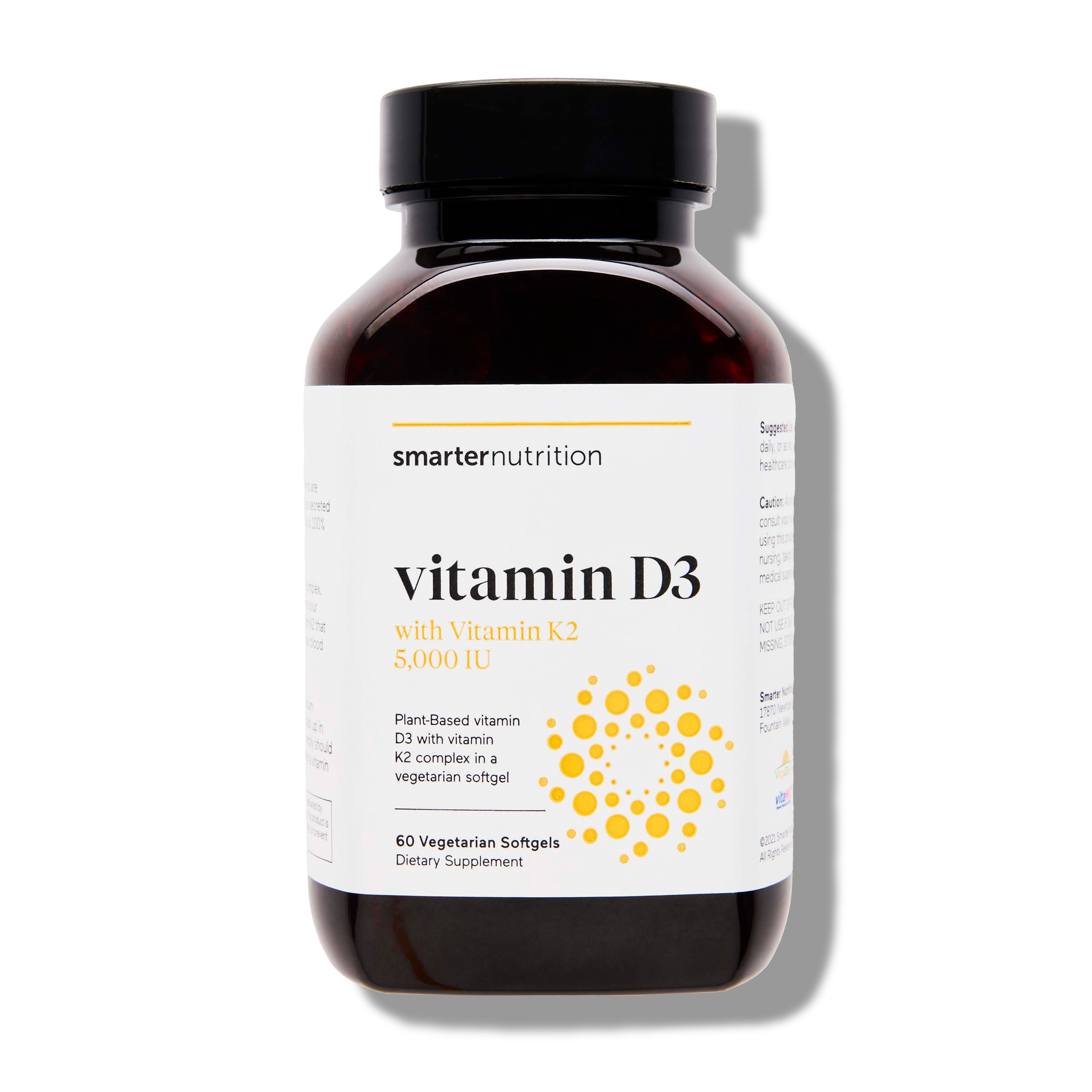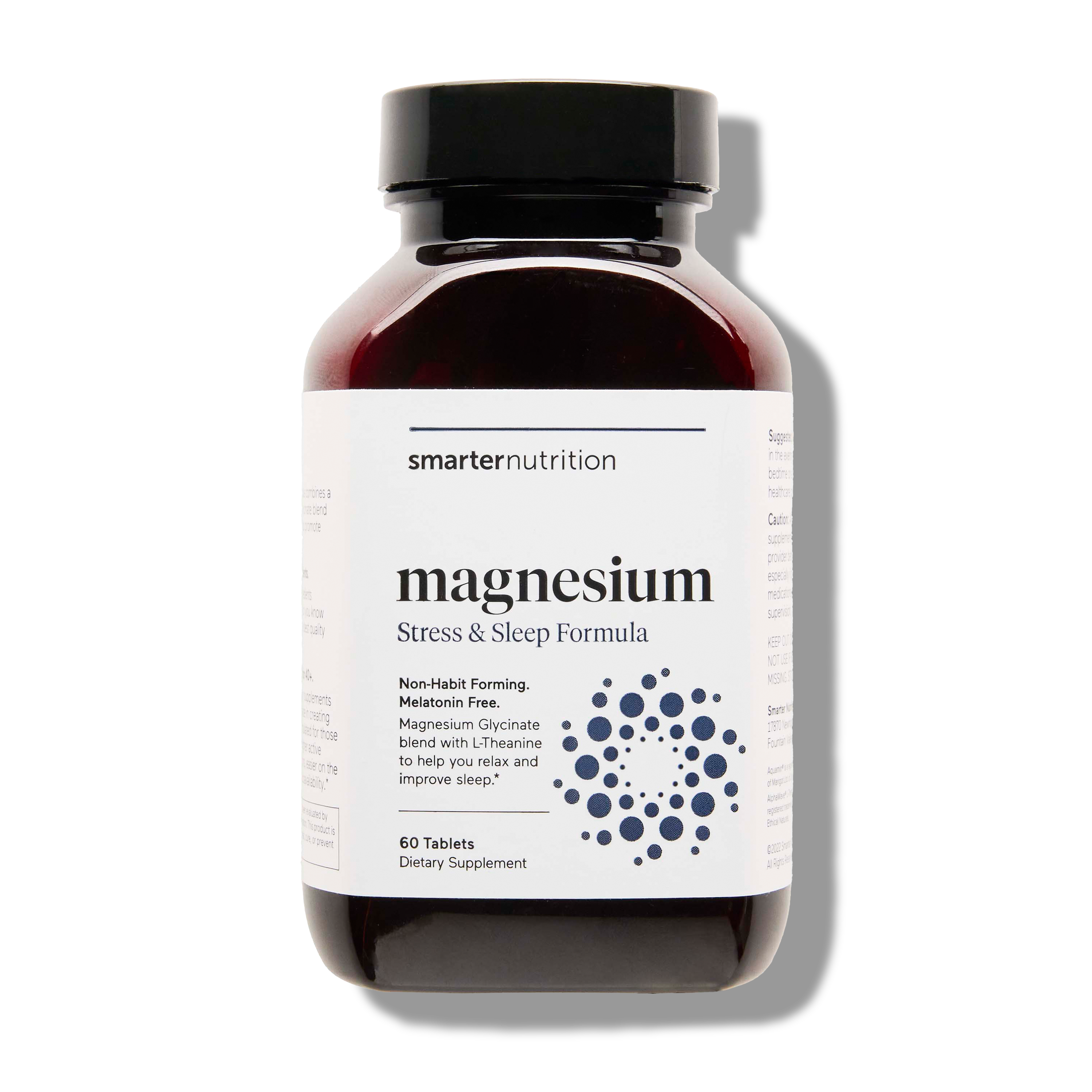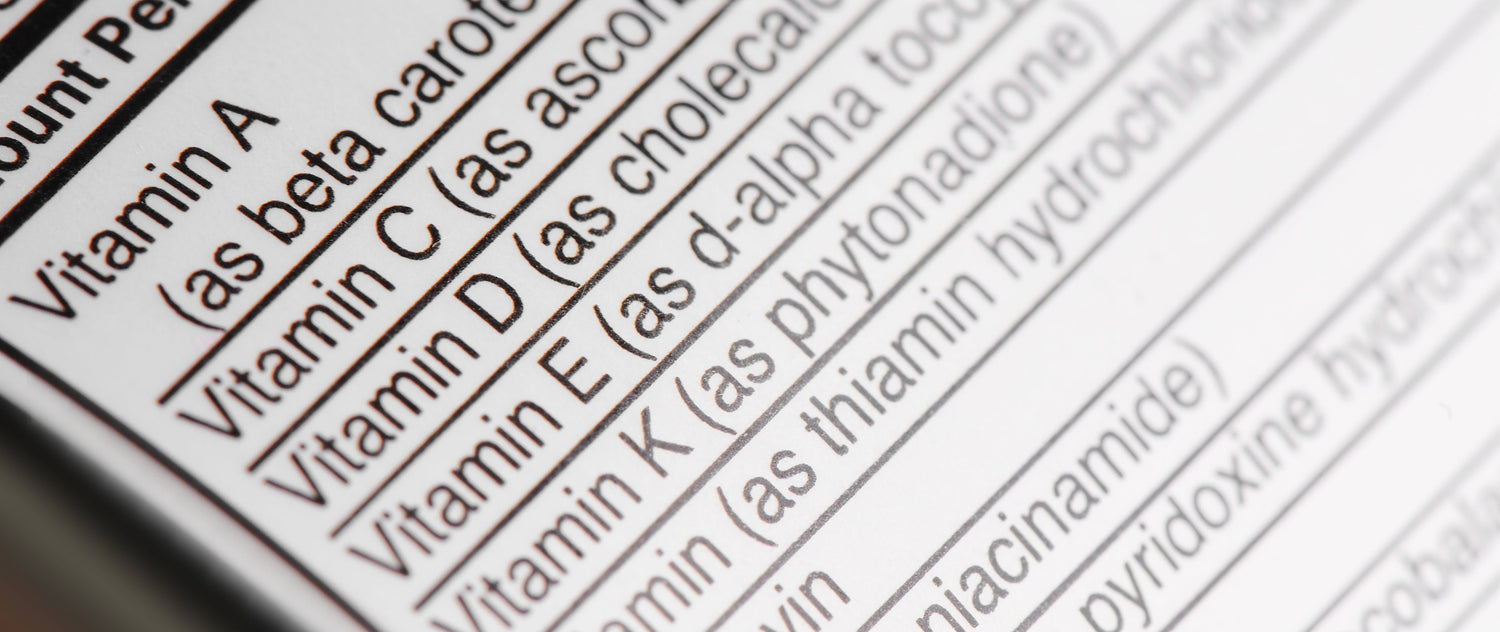How To Read Supplement Labels
What Are Supplements?
Supplements are designed to enhance your diet and provide extra support. They often contain a blend of vitamins, minerals, enzymes, herbs, extracts, probiotics, amino acids, and protein.
Supplements come in various forms—tablets, capsules, softgels, gummies, liquids, and powders—giving you flexibility in how you incorporate them into your routine.
It’s important to remember that the Food and Drug Administration (FDA) doesn’t regulate supplements with the same level of oversight as prescribed medications. This means there’s no guarantee that a supplement meets specific quality standards or that its consistency will be the same from batch to batch.
That’s why it’s essential to know how to read a supplement label to ensure you're choosing the highest-quality products that align with your health goals.
Supplement Facts
The supplement facts label includes most of the important information about a supplement, including the serving size, number of servings per container, ingredients in the product, and amount of each nutrient that it contains.
Start by checking the serving size, which can give you an idea of how much you should take to reach the desired dosage.
For example, if the dosage of a vitamin is provided in one softgel versus two, you probably want the product that makes you take the least amount of pills.
The label instructions also dictate whether it should be divided into multiple doses during the day or if it can be taken all at once, which some people may prefer.
You should also see how much of each nutrient or ingredient is provided in every serving.
"Other" Ingredients"
It might sound simple but always start with the ingredient list.
Pay close attention to ingredients like fillers, sweeteners, preservatives, and additives—these are often tucked away in the fine print under "other ingredients."
Fillers are frequently used to cut costs or add bulk to tablets and capsules. Think about it—if a capsule is only half-full, it’s not exactly appealing. That's why some manufacturers use fillers to make sure their products look more complete.
Additives, on the other hand, serve a different purpose. They help extend shelf life, bind ingredients together, or improve the texture, color, taste, or consistency of the product.
While some of these ingredients are necessary, it’s best to be cautious of supplements loaded with long lists of additives. At Smarter Nutrition, we keep it clean, clear, and always focused on what truly matters.
Some of the most common additives to watch out for include:
- Stearic acid
- Gelatin
- Soybean oil
- Maltodextrin
- Potassium sorbate
- Silicon Dioxide
- Citric acid
- Titanium Dioxide
- Soy Lecithin
- Magnesium Stearate
- Sorbitol
Supplements may also contain artificial colors, sweeteners, or flavorings, all of which will also be indicated on the label.
Keep in mind that ingredients are ordered by sheer mass, with the first ingredients present in the largest amounts.
Not all fillers or additives are harmful
In fact, many times, they’re essential for maintaining the integrity and structure of a supplement. For example, gelatin is commonly used in softgel capsules because it’s what makes the capsule itself. Vegan capsules, on the other hand, are often made from cellulose.
While these ingredients are generally safe, it's important to stay mindful of supplements with long lists of unrecognizable ingredients. Quality and clarity go hand in hand.
At Smarter Nutrition, we’re committed to your safety, which is why we avoid ingredients like titanium dioxide, silicon dioxide, and magnesium stearate—substances that can pose risks when consumed in excess.
European food safety regulators have already classified titanium dioxide as unsafe for human consumption due to its potential toxicity. Yet, many supplement companies in the U.S. continue to use these ingredients for texture and color.
We believe you deserve better. That’s why our formulators prioritize clean, safe, and effective ingredients, always ensuring that our products are free from harmful additives. Your health is our top priority, and we’re dedicated to delivering formulas you can trust.
Percent Daily Value
For vitamins and minerals, you’ll often see the Percent Daily Value (%DV) listed, which reflects the estimated nutritional needs of someone following a 2,000-calorie diet.
For example, if a product offers 50% of the DV for a certain nutrient, it’s providing about half of what most people need in a day. In some cases, supplements may exceed 100% of the DV for specific nutrients. While this can be beneficial in moderation, it's important to do your own research and consult with a healthcare provider before adding any supplement to your routine.
It's crucial to avoid exceeding the Tolerable Upper Intake Level (UL), which is the maximum amount that may lead to adverse effects.
Important note: The UL is the limit for all sources of a nutrient. That includes the amount you get from food as well! So make sure to take into account the food you eat when you're determining whether you've reached the UL on a particular nutrient.
Be sure to always check the UL before buying a new supplement. Additionally, it’s best to discuss supplement use with your healthcare provider, especially if you are taking medications or have any underlying medical conditions.
Quality
Supplements that are sold in the United States are required to follow Current Good Manufacturing Practices (cGMPs), which ensure that companies adhere to approved processes for the manufacturing, packaging, labeling, and storage of supplements.
The Food and Drug Administration (FDA) is responsible for ensuring that manufacturers adhere to these guidelines, which helps supplements meet required specifications for strength, identity, purity, and composition.
Some manufacturers may also opt to undergo third-party testing to obtain certification from organizations like:
- NSF International
-
United States Pharmacopeia (USP)
-
ConsumerLab
- Underwriters Laboratories (UL)
These organizations set strict standards for the purity and potency of supplements, which is why certifications are typically a good indicator of quality.
Products that have received certification from these organizations often display a verification seal on the label. You can also usually find a list of certified products on the website of the third-party organization.
The Meaning of Terms
Supplement labels often contain terms like “all natural” or “organic,” which may be confusing for consumers.
Here are a few of the most common terms you may see listed on your supplement.
Natural
According to the FDA, the terms “natural” and “all natural” refer to products that don’t contain any synthetic ingredients, including artificial flavors or colors.
However, keep in mind that use of the term “natural” is not strictly enforced in the United States.
Thus, it's still important to check the ingredients label for synthetic sweeteners, flavors, and colors.
Organic
Not all organic products are made equal. Supplements can be marketed as organic, as long as they follow the USDA organic regulations which are regulated by the National Organic Program (NOP).
There are 4 labeling categories for certified organic food products: 100% Organic, Organic, Made with organic, and specific organic ingredients.
100% organic labeled products are pretty straightforward; it means the product contains 100% organic ingredients (excluding salt and water, which are considered natural).
Products that are labeled "organic" have at least 95% certified organic ingredients and up to 5% non-organic materials.
The "Made with organic" category must contain at least 70% certified organic ingredients. They may contain up to 30% of non-organic ingredients. However, all ingredients in the formula must be made without GMOs.
Specific organic ingredients are listed under the other ingredients list when less than 70% of the formula is organic. For example, a list could say: cellulose capsule, organic MCT oil, glycerin, to specify which ingredient was organic.
Vegan
A vegan icon or label indicates that the product does not contain any animal-derived ingredients, which include eggs, milk, meat, dairy, gelatin, and more.
Cruelty-Free
Many consumers assume that vegan and cruelty-free mean the same thing, but they do not. Cruelty-free means that the product has not been tested on any animals.
Food-based or whole food
Some products are referred to as “food-based” or “whole food” supplements.
These supplements are usually made using a concentrated blend of food substances that have been dehydrated.
While this may sound like a good option for health-conscious consumers, it’s important to note that this is not necessarily a good indicator of quality.
In fact, food-based or whole food supplements often contain synthetic ingredients, including additives, fillers, and flavorings.
Non-GMO
Some supplements are advertised as non-GMO or GMO free, meaning that they’re produced without any genetically modified ingredients.
Many people choose to avoid or limit their consumption of GMO ingredients due to concerns about food allergies, antibiotic resistance, and their potential long-term health effects.
Products may also have a seal from The Non-GMO Project, a non-profit organization that verifies that ingredients are non-GMO.
The Smarter Difference
ALL Smarter Nutrition products are non-GMO, which means they contain no genetically modified ingredients. We are committed to sourcing the best ingredients that you can trust in.




